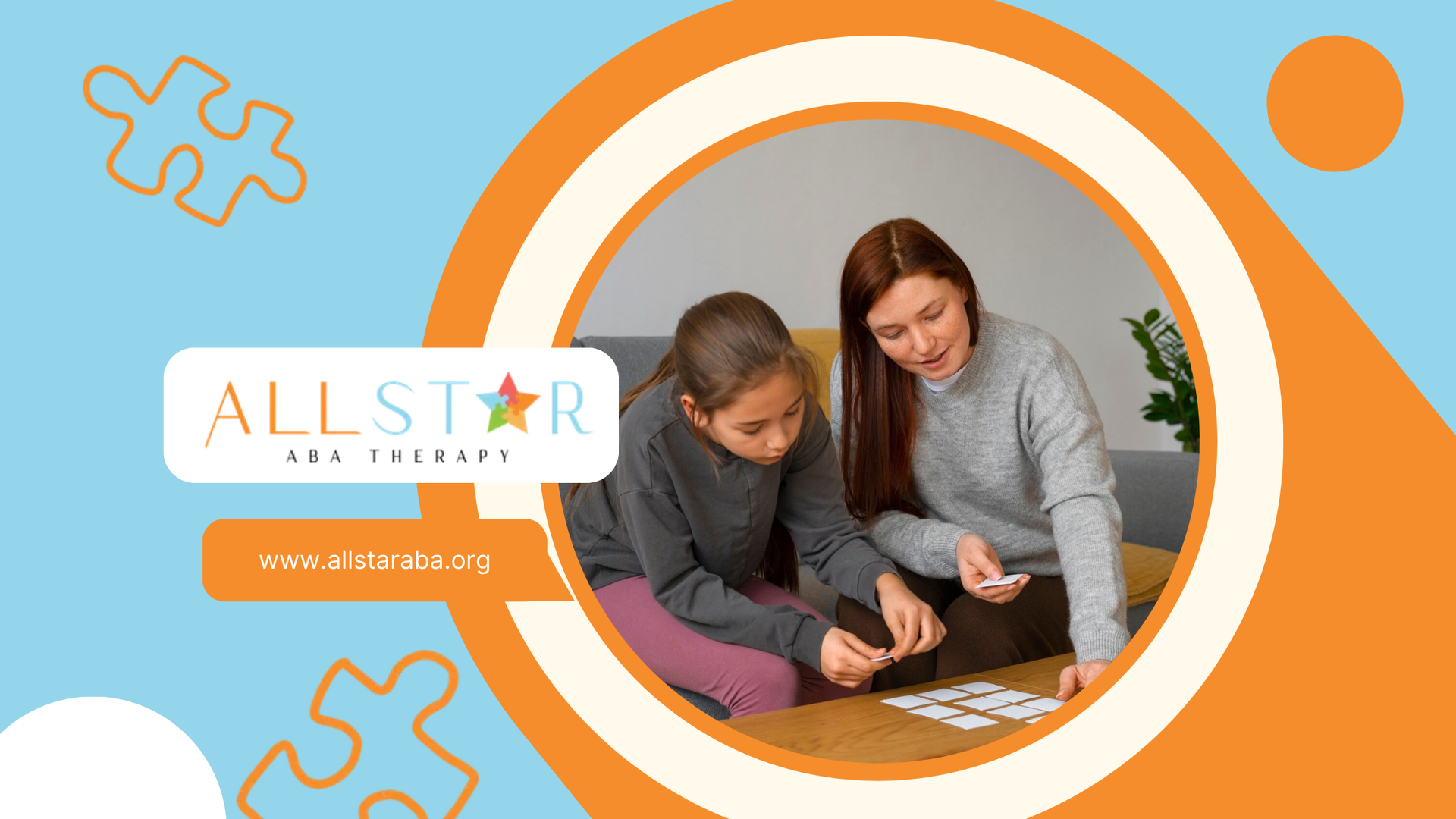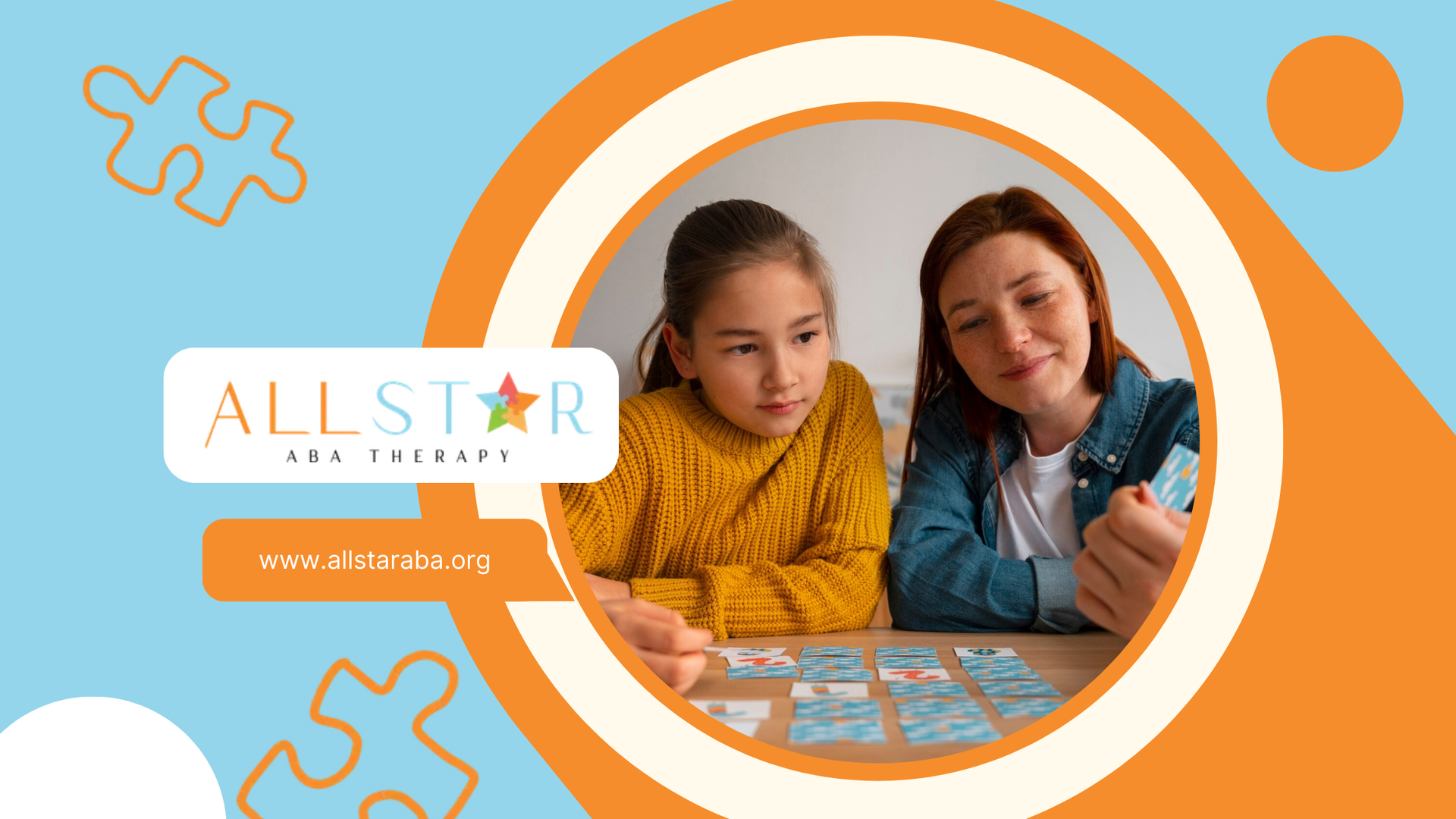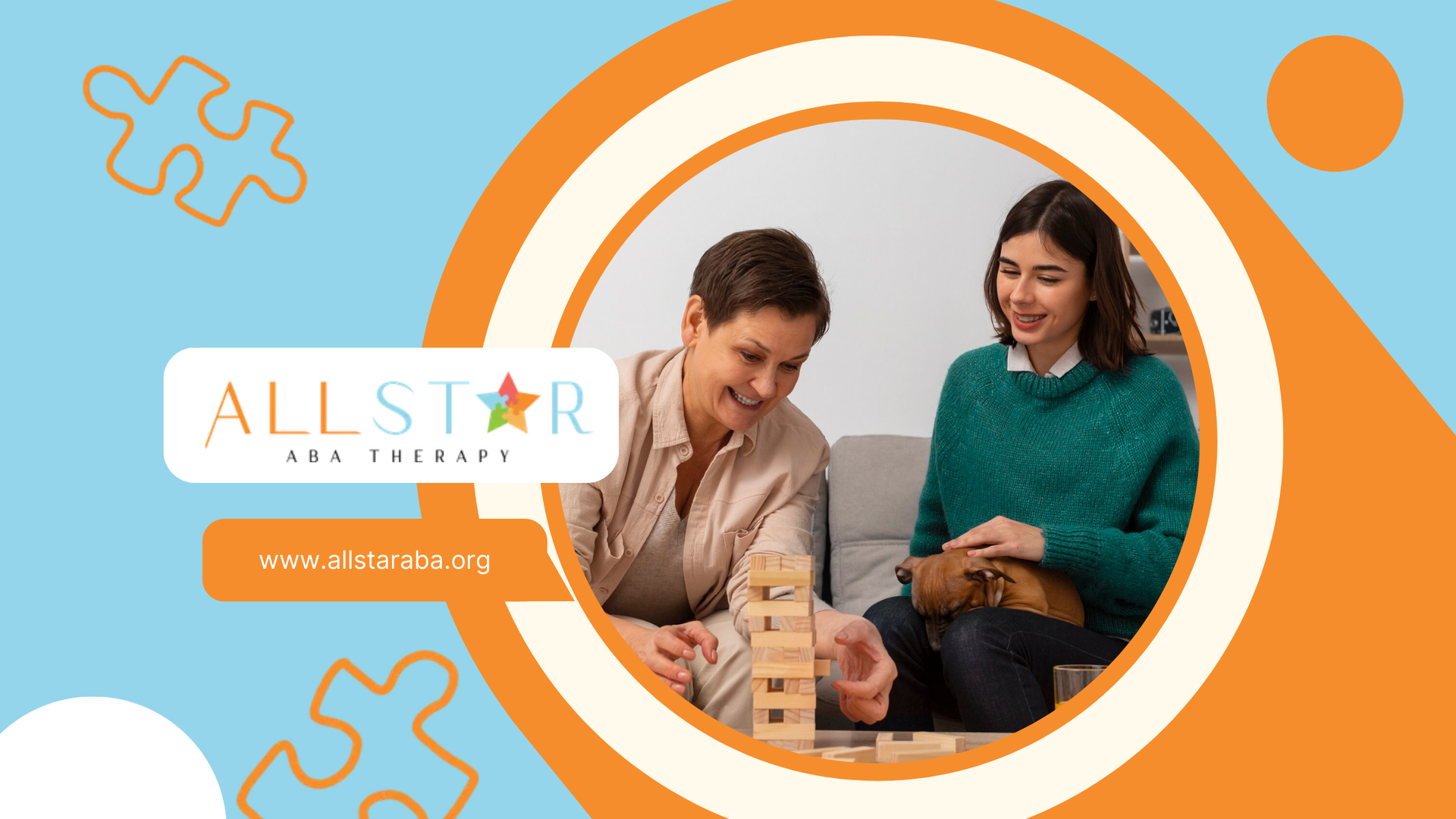New Paragraph
Inspiring ABA Therapy Success Stories
Key Highlights
- ABA therapy, also known as applied behavior analysis, has been instrumental in helping individuals with autism spectrum disorder (ASD) lead fulfilling lives since the 1960s.
- ABA therapy focuses on behavior analysis and aims to reduce problem behaviors and increase appropriate behaviors in children with ASD.
- ABA therapy helps children develop skills such as communication, social interaction, cognitive abilities, and behavioral improvements.
- Early intervention is crucial for optimal outcomes in ABA therapy.
- ABA therapy involves creating a personalized treatment plan based on the child's individual needs and goals.
- Real-life success stories highlight the transformative impact of ABA therapy on communication skills, social skills, and overall growth.
Introduction
ABA therapy, also known as applied behavior analysis, has been a game-changer in the field of autism treatment since the 1960s. This evidence-based therapy has helped countless individuals with autism spectrum disorder (ASD) lead fulfilling lives by focusing on behavior analysis and promoting positive changes. By reducing problem behaviors and increasing appropriate behaviors, ABA therapy has become a beacon of hope for families navigating the complexities of ASD.
Autism spectrum disorder is a neurodevelopmental condition that impacts communication, social interaction, and behavior. ABA therapy, rooted in behavior analysis principles, provides targeted interventions to support individuals with ASD in developing essential skills and overcoming challenges. By systematically modifying the environment and providing positive reinforcement, ABA therapy aims to foster desired behaviors and improve overall quality of life.
The effectiveness of ABA therapy lies in its recognition of the impact of early intervention. Research has shown that early intervention plays a crucial role in optimizing outcomes for children with ASD. By starting ABA therapy as early as possible, children can receive the support they need to develop crucial skills and reach their full potential.
ABA therapy involves creating a comprehensive treatment plan tailored to the unique needs of each child. This plan is developed by a team of professionals, including Board Certified Behavior Analysts (BCBAs), who assess the child's strengths and challenges and design interventions accordingly. The therapy sessions typically involve one-on-one interactions between a trained behavior therapist and the child, focusing on specific goals and targets identified in the treatment plan.
The Essence of ABA Therapy
ABA therapy is a highly effective approach to supporting individuals with autism spectrum disorder (ASD). It revolves around understanding behavior and utilizing behavior analysis principles to promote positive changes. The therapy focuses on reducing problem behaviors and increasing appropriate behaviors, helping individuals with ASD develop essential skills and overcome challenges.
Central to ABA therapy is the development of a personalized treatment plan. This plan outlines specific goals and targets behaviors that need to be addressed. It takes into account the unique needs of each child and serves as a roadmap for progress. ABA therapy is most effective when implemented early in a child's life, making early intervention critical for optimal outcomes.
What is ABA Therapy?
ABA therapy, short for applied behavior analysis therapy, is a widely recognized and evidence-based approach to supporting individuals with autism spectrum disorder (ASD). It is based on the principles of behavior analysis, which focuses on understanding how behavior is learned and how it can be modified through systematic interventions.
When a child receives an autism diagnosis, ABA therapy becomes an essential tool in their treatment plan. This therapy is tailored to the individual needs of each child and aims to address specific behaviors that may be challenging for them. By focusing on behavior analysis, ABA therapy helps individuals with ASD develop essential skills and overcome difficulties in communication, social interaction, and behavior.
The therapy is designed to create positive changes by systematically modifying the environment and providing reinforcement for desired behaviors. ABA therapy recognizes that behavior is influenced by the environment and that by making targeted interventions, individuals with ASD can learn and develop new behaviors that enhance their overall quality of life.
The Importance of Early Intervention
Early intervention plays a crucial role in the success of ABA therapy for children with autism spectrum disorder (ASD). Research has shown that starting therapy as early as possible leads to better outcomes and overall development.
During the early years, children's brains are highly malleable and receptive to learning. By providing ABA therapy during this critical period, children have the opportunity to acquire and develop essential skills that will benefit them throughout their lives. Early intervention focuses on enhancing cognitive abilities, language and communication skills, and social interaction, allowing children to reach important developmental milestones.
ABA therapy implemented early on can help children with ASD catch up to their peers in terms of communication, social skills, and overall functioning. It provides them with the foundation they need to navigate the world and participate fully in various activities. Early intervention sets the stage for future growth and success, paving the way for a brighter future for children with ASD.
Beginning the ABA Journey
Embarking on the ABA therapy journey is a significant step for families with children with autism spectrum disorder (ASD). Recognizing the unique needs of their child and seeking appropriate interventions is the first important milestone.
Setting goals is an essential component of the ABA therapy journey. Parents, along with the ABA professionals, work together to define specific goals for the child's development. These goals are tailored to the child's unique needs and strengths, providing a roadmap for progress and milestones. By setting clear and achievable goals, parents and ABA professionals can collaborate to support the child's development and create a brighter future.
Recognizing the Signs for ABA Therapy
Recognizing the signs that indicate the need for ABA therapy is crucial for families with children on the autism spectrum. Early intervention is key to maximizing the child's developmental potential and providing the necessary support and interventions.
Signs that may prompt parents to consider ABA therapy include behaviors commonly associated with autism spectrum disorder (ASD), such as difficulty with social interactions, repetitive behaviors, and delayed language development. These behaviors can significantly impact a child's ability to communicate, engage with others, and navigate daily life.
ABA therapy, with its focus on behavior analysis, offers strategies and interventions to address these challenging behaviors and help children with ASD develop essential skills. By identifying the signs and seeking early intervention, families can provide their child with the support they need to thrive and reach their full potential.
Setting Personalized Goals for Each Child
In ABA therapy, setting personalized goals for each child is a crucial step in their journey towards growth and development. These goals are tailored to the child's individual needs, strengths, and challenges, providing a roadmap for progress and achievement.
The process of setting goals begins with a comprehensive assessment conducted by a team of professionals, including Board Certified Behavior Analysts (BCBAs). This assessment helps identify the areas in which the child may need support and guides the development of a personalized treatment plan.
The treatment plan outlines specific goals that address the child's unique needs. These goals may focus on areas such as communication, social skills, and life skills. By setting clear and achievable goals, ABA therapy provides children with the opportunity to learn and develop new skills, enhancing their overall functioning and quality of life.
Transformative ABA Therapy Success Stories
ABA therapy has been instrumental in transforming the lives of individuals with autism spectrum disorder (ASD). Real-life success stories highlight the remarkable progress made in areas such as communication skills, social skills, and overall development.
Through consistent and targeted intervention, ABA therapy has enabled individuals with ASD to overcome challenges and develop essential skills. Success stories showcase the hard work and dedication of individuals, families, and ABA professionals involved in the therapy process.
These stories serve as inspiration for other families facing similar challenges and demonstrate the potential for growth and progress through ABA therapy. They provide hope and reinforce the transformative impact the therapy can have on the lives of individuals with ASD.
Overcoming Communication Barriers
Effective communication is a crucial skill for children with autism spectrum disorder (ASD) to develop. ABA therapy has proven to be instrumental in helping children overcome communication barriers and acquire essential skills in this area. Here are some ways ABA therapy supports children with ASD in improving their communication skills:
- Speech Therapy:
ABA therapy often incorporates speech therapy techniques to help children with ASD improve their verbal communication abilities.
- Teaching Full Sentences:
ABA therapists use strategies to teach children how to express themselves using full sentences, enabling them to communicate their thoughts and needs effectively.
- Eye Contact: ABA therapy focuses on teaching children the importance of eye contact during communication, helping them develop stronger connections with others.
- Non-verbal Communication: ABA therapy also addresses non-verbal communication skills, such as body language and facial expressions, to enhance overall communication abilities.
Through targeted interventions and consistent practice, ABA therapy empowers children with ASD to overcome communication barriers and engage effectively with others.
Behavioral Improvements and Social Integration
ABA therapy not only helps children with autism spectrum disorder (ASD) improve their communication skills but also focuses on behavioral improvements and social integration. Here are some ways ABA therapy supports children in these areas:
- Social Skills Training:
ABA therapy incorporates social skills training to help children with ASD develop the necessary skills for social interaction, such as initiating conversations, maintaining friendships, and understanding social cues.
- Teaching Appropriate Behaviors:
ABA therapy targets specific behaviors that may be challenging for children with ASD and teaches them appropriate alternatives, fostering positive social interactions.
- Social Interaction Opportunities:
ABA therapy provides children with structured opportunities for social interaction, allowing them to practice their social skills in a supportive environment.
- Positive Reinforcement: ABA therapy utilizes positive reinforcement techniques to encourage and reinforce desired social behaviors, helping children build confidence and engage more effectively with others.
Through these interventions, ABA therapy plays a crucial role in improving social skills, promoting appropriate behaviors, and facilitating social integration for children with ASD.
The Role of Families in ABA Success
The success of ABA therapy is greatly influenced by the active involvement and support of families. Families play a vital role in creating a conducive environment for the child's progress and overall well-being.
A supportive home environment is essential for the success of ABA therapy. Families can create an atmosphere that nurtures growth and learning, providing a foundation for the child's development. This involves incorporating therapy techniques and strategies into daily routines and activities, reinforcing the skills learned during therapy sessions.
Additionally, family engagement in the therapy process is crucial. By actively participating in parent training sessions and implementing therapy strategies at home, families can reinforce the progress made during ABA therapy. Dedication and consistent support from families significantly contribute to the overall success of the therapy journey.
Building a Supportive Home Environment
Creating a supportive home environment is essential for the success of ABA therapy. Here are some ways families can contribute to building a supportive environment:
- Consistency:
Providing consistent routines and expectations helps create a sense of security and predictability for the child, reinforcing the skills learned during ABA therapy.
- Visual Supports:
Using visual supports such as schedules, visual cues, and social stories can help children with ASD navigate daily routines and understand expectations.
- Communication: Open and effective communication between family members and ABA professionals is crucial for ensuring continuity in therapy goals and strategies.
- Reinforcement: Implementing positive reinforcement techniques at home, such as praise and rewards, can help reinforce desired behaviors and motivate the child to continue their progress.
By actively engaging in the therapy process and creating a supportive home environment, families can enhance the effectiveness of ABA therapy and promote the child's overall development.
Engaging in the Therapy Process
Family engagement in the ABA therapy process is essential for optimal outcomes. Here are some ways families can actively participate:
- Parent Training:
Attending parent training sessions provided by ABA professionals equips families with the knowledge and skills necessary to support their child's progress at home.
- Implementing Strategies: Applying therapy strategies and techniques learned during sessions in daily routines and activities helps reinforce the skills and behaviors targeted in ABA therapy.
- Communication with ABA Professionals: Maintaining open lines of communication with the ABA professionals involved in the child's therapy allows for collaboration and adjustment of goals and strategies as needed.
- Dedication: Consistently implementing therapy strategies at home and being actively involved in the therapy process shows dedication and reinforces the child's progress and growth.
By actively engaging in the therapy process, families play a crucial role in supporting the child's development and maximizing the benefits of ABA therapy.
Insights from Experienced ABA Therapists
Experienced ABA therapists bring valuable insights to the therapy process, adapting strategies to meet the individual needs of each child. Here are some key insights from experienced ABA therapists:
- Adapting Strategies: ABA therapists recognize the importance of tailoring therapy approaches to meet each child's unique needs, ensuring personalized interventions that maximize growth and development.
- Beyond Therapy: ABA therapists emphasize the importance of incorporating therapy strategies into daily life, beyond the therapy sessions, to promote generalization of skills and support long-term progress.
By drawing on their expertise and experience, ABA therapists provide valuable guidance and support for families, ensuring the therapy journey is effective and beneficial for each child.
Adapting Strategies for Individual Needs
One of the key strengths of experienced ABA therapists is their ability to adapt strategies based on the individual needs of each child. Here's how they approach adapting strategies:
- Assessing Unique Needs:
ABA therapists conduct thorough assessments to understand the child's strengths, challenges, and learning styles, enabling them to tailor interventions accordingly.
- Personalized Interventions: By recognizing and embracing each child's uniqueness, ABA therapists develop personalized interventions that target specific skills and behaviors, maximizing the child's potential for growth.
- Ongoing Assessment and Adjustment: ABA therapists regularly assess the child's progress and adjust strategies as needed to ensure continued growth and development.
Through these adaptive strategies, ABA therapists provide individualized care that addresses the unique needs of each child and supports their progress in the therapy process.
The Journey Beyond Therapy Sessions
ABA therapy extends beyond the therapy sessions, encompassing the development of life skills and new skills that empower children with autism spectrum disorder (ASD). Here's how ABA therapy supports the journey beyond therapy:
- Life Skills Development:
ABA therapy focuses on teaching practical life skills that enable children to navigate daily activities and foster independence.
- Generalization of Skills:
ABA therapists work towards ensuring that the skills learned in therapy sessions are generalized and applied in various settings, promoting independence and functional application.
- Transition Planning: ABA therapy prepares children for transitions, such as school or other changes in routines, by equipping them with the necessary skills and strategies to navigate these transitions successfully.
By emphasizing life skills development and facilitating the transfer of skills to real-life situations, ABA therapy empowers children with ASD to thrive beyond the therapy sessions.
Conclusion
In the realm of ABA therapy, success stories illuminate the transformative power of early intervention and personalized goals. These narratives showcase not only the triumph over communication barriers but also the deep-rooted behavioral improvements and enhanced social integration. The collaborative role of families in creating a supportive environment is a cornerstone for these achievements. Experienced ABA therapists impart valuable insights on adapting strategies and extending the journey beyond therapy sessions. Frequently asked questions shed light on the duration of ABA therapy and its positive impact on school performance. These inspiring accounts underline the essence of ABA therapy and the profound difference it can make in the lives of individuals and their families.
Frequently Asked Questions
How Long Does ABA Therapy Typically Last?
ABA therapy typically lasts for several months to a few years, depending on the child's individual needs and goals. The duration of therapy is determined by factors such as the child's progress, the complexity of the behaviors targeted, and the dedication of the family. ABA therapy often begins early, around 2 to 4 years of age, to maximize the benefits and support the child's milestones and developmental progression.
Can ABA Therapy Help with School Performance?
ABA therapy can have a positive impact on school performance for children with autism spectrum disorder (ASD). By targeting areas such as communication skills, social skills, and behavior analysis, ABA therapy equips children with the necessary tools and strategies to succeed academically. The skills developed through ABA therapy can support children with ASD throughout their educational journey, from preschool to high school.
Need Support?
We're Here to Help!
Our experienced team is ready to assist you. Reach out today to discuss how we can support your child's development and well-being.
Get started with expert ABA therapy today.








